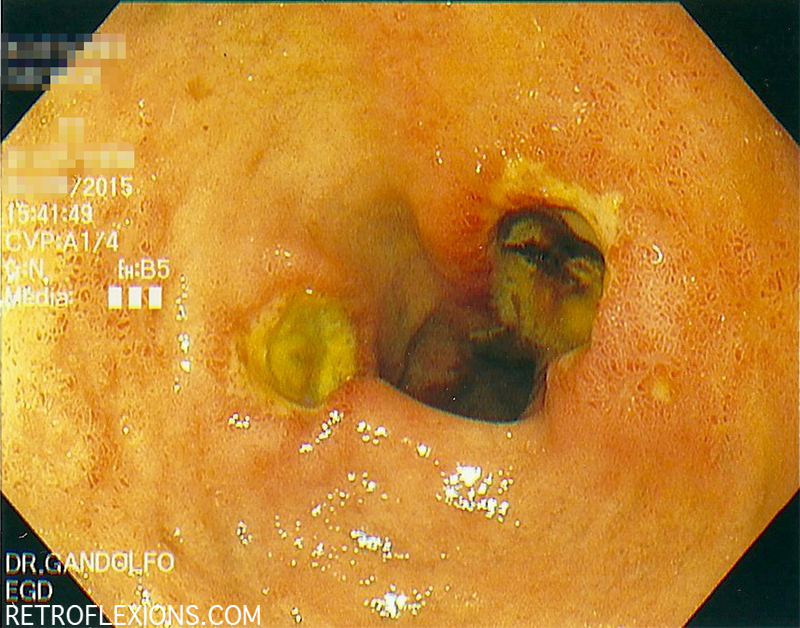
“Kissing” ulcers in the duodenal bulb.
These are “kissing” duodenal ulcers. The ulcers are on opposite walls of the duodenal bulb, and are basically touching each other, hence the “kissing” description. If you notice, the larger ulcer on the right has a flat dark spot in the middle…this is the former site of the large artery that was actively bleeding 24 hours prior. At that time, it was treated with a large bipolar electrocautery probe.
This picture was taken after a second-look endoscopy because we were not sure if the patient was still bleeding, or just passing old blood from the GI tract. Duodenal ulcers in this location can bleed massively and have a high associated mortality. Sometimes looking again within a short time interval is important in selected patients to make sure bleeding has stopped. As it turns out, the first treatment was successful and there was no sign of further bleeding.
The most common cause of duodenal ulcers in general is infection with the bacteria Helicobacter pylori. The most common cause of bleeding ulcers is aspirin or nonsteroidal anti-inflammatory drug (NSAID; e.g., ibuprofen, naproxen, diclofenac) use. This patient was on aspirin and also ended up having a H. pylori infection.
If you enjoyed this article, sign up for our free newsletter and never miss a post!
References:
Chiu PW. Second look endoscopy in acute non-variceal upper gastrointestinal bleeding. Best Pract Res Clin Gastroenterol 2013;27:905-11.
